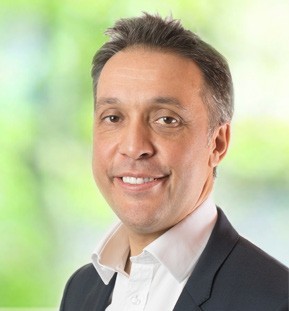RARE DISEASES
Advancing treatment options for rare disease patients
Chris Moore from Veeva Europe explores how companies are overcoming challenges to develop, launch and educate on new rare disease medicines faster
The landscape of rare diseases has evolved significantly and the number of people with a rare disease challenges the very notion of their rarity. Every year, thousands of individuals confront the life-altering reality of being diagnosed with one of the 6,000-8,000 identified rare conditions, collectively affecting one in 17 individuals.1 The majority of these conditions are genetic and emerge early in life, with more than half of patients being children, many of whom are not expected to reach their fifth birthday.
Less than 5% of rare diseases have even a single approved treatment today.2 Finding new treatments is an urgent challenge, especially for patients left waiting for medical advancements. Survey findings underscore the long and emotionally taxing journey endured by individuals awaiting a diagnosis. Among adults, a rare disease diagnosis can take up to five years, with half receiving a misdiagnosis. The need for increased awareness, research and expedited treatment pathways in rare disease remains critical.
Rare diseases challenge traditional ways of doing business. They require the industry to better identify target patient populations for trials and then keep them engaged during the course of the study, even across geographies. Once a medicine is approved, it is crucial to seamlessly transition from trials to treatment given the smaller patient cohort, as the physicians who conduct the trials often become prescribers.
The good news is that the industry is making great progress in how medicines for rare diseases are developed and brought to market. From delivering better site support during clinical studies to greater connectivity between medical and commercial teams, companies are breaking down historic silos and cutting the time to treatment. Along with richer healthcare data and effective medical education for physicians on symptoms and treatment options, these advances will help those undergoing complex patient journeys.

Putting the patient experience first during studies
Over half of orphan drug trials are eventually discontinued or fail to publish results after completion. Often, studies can’t recruit or lead to inconclusive results. When a trial gets off the ground, sites have to invest significant time in keeping a small number of participants engaged. Removing excessive system and process complexity will improve their efforts. For years, sites have voiced their concerns about the multiple disconnected tools they must navigate just to keep a study going. As one site leader explains, navigating unintuitive technology absorbs time from trial activities and can make them feel like they’re asking too much from patients: “The technology shouldn’t be the trial itself, it should support the trial. It’s taking time away from what we want to do, which is taking care of our patients.” Simplifying the technology experience and reducing the admin burden will better meet sites’ and patients’ needs.
The knock-on effects could include better participant retention during rare disease trials. This may widen patient access to life-enhancing new treatments. Reflecting on her own experiences as a rare disease patient, Helen Shaw, co-founder of the virtual site VCTC, observes: “I see how hard it is to take part in a clinical trial. But patients do want that opportunity to be offered something that they wouldn’t get in their standard care, whether additional MRIs or new medicines.”
Data insights for effective commercial execution
Data is core to understanding where the greatest patient needs are ahead of a launch. ADVANZ PHARMA is a global biopharma company focused on specialty, hospital and rare disease medicines. Andy Eeckhout, head of CRM and digital solutions for global commercial excellence, explains: “It’s crucial to take a patient perspective. This means using real-time data to understand the patient journey and identify the two or three most influential key opinion leaders (KOLs) per country, so we can best communicate the product across markets.”
An added complexity is that rare diseases often involve multiple specialties. Medical science liaison (MSL) teams have to get up to speed quickly on complex science before meetings with relevant experts, while also being responsible for other (more mainstream) disease areas. “Our customerfacing teams need to be agile communicators and effectively switch to a more patientoriented, in-depth scientific discussion than with generics,” Eeckhout explains. Access to scientific resources and activity data in one place leads to higher-quality conversations. “Pre-call planning is crucial for MSLs before and after launch. The more data they can find, including on past interactions, the better,” Eeckhout adds.
Depending on the disease, there could be a long gap before a patient presents with potential symptoms, at which point HCPs will want timely access to experts and resources. Smoother handovers between field medical and sales ensure HCPs can find answers quickly and connect to MSLs if needed. ADVANZ, for example, has launched a pre-launch module in its CRM so that market access, medical and commercial teams can share information compliantly and effectively. Eeckhout notes: “Physicians need a direct line to the industry so they know who to contact when they have questions. Medical and commercial teams need to talk to each other and remain agile across customer conversations.”
Highly personalised content for HCPs is also key when targeting diseases with small patient populations. To be effective, marketing teams need clarity on the most impactful content to recommend for field visits across markets. For example, Recordati Rare Disease uses data analytics on its global repository of promotional and medical engagement tools, so it can support content use across a portfolio of 17 rare disease medicines of focus (and a growing global footprint). As its head of marketing and customer engagement, Gordon Daniels, notes: “How we engage with HCPs is critical. We need to know what percentage of our content is being developed and relevant to support different HCPs, whose patients rely on them for their rare disease diagnosis and management.”
Defying the odds, and beating them
Many scientific advancements are offering hope to rare disease patients and their families. Organisations embarking on this long and sometimes risky trial-to-treatment pathway are making all the difference.
Companies are actively shortening the time to treatment through better support for research sites. This support enables them to concentrate on patient recruitment and retention during trials. Once a drug is approved, integrated technology and comprehensive data can facilitate collaboration between traditionally siloed function. This collaboration allows for the identification, engagement and provision of medical education to relevant HCPs and KOLs.
A multifaceted approach is also needed to tackle the diagnostic hurdles faced by patients with rare diseases. This includes raising awareness among healthcare professionals about the signs and symptoms of rare conditions, promoting the use of advanced diagnostic technologies such as genetic testing and molecular imaging and streamlining the referral process for patients suspected of having a rare disease.
Efforts can be made to improve access to specialised healthcare services and expertise, particularly in underserved regions where diagnostic and treatment facilities may be limited. Making use of digital platforms can play a pivotal role in connecting patients with rare diseases to specialists, thereby overcoming geographical barriers and facilitating timely diagnosis and intervention.
The journey for every rare disease patient can be a daunting one, with numerous challenges and hurdles they must face. As one biotech leader points out: “Their diagnosis is with them every day. Often, they can’t pronounce the condition, and don’t know anyone else who has it.” It’s up to the life sciences industry to do its part and to help these patients to not just defy the odds, but eventually beat them.

As president of Veeva Europe, Chris Moore is responsible for growing the business in the region. A 30+ year veteran of the life sciences industry, Chris started his career at ICI Pharmaceuticals (now AstraZeneca). Chris then joined a startup called Kinesis, building a team delivering document management solutions for pharmaceutical companies. Through a series of mergers and acquisitions, Kinesis ultimately became PwC; Chris was made a partner with PwC in 2001. Chris went on to run both European and US (West Coast) life sciences businesses for IBM before leading the IBM global life sciences consulting Business Analytics and Optimisation unit. Most recently, Chris was the lead partner for life sciences for Europe, the Middle East and Africa at EY. Chris holds a bachelor of science degree in information technology from the University of Salford, UK.